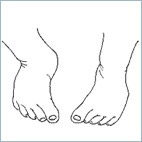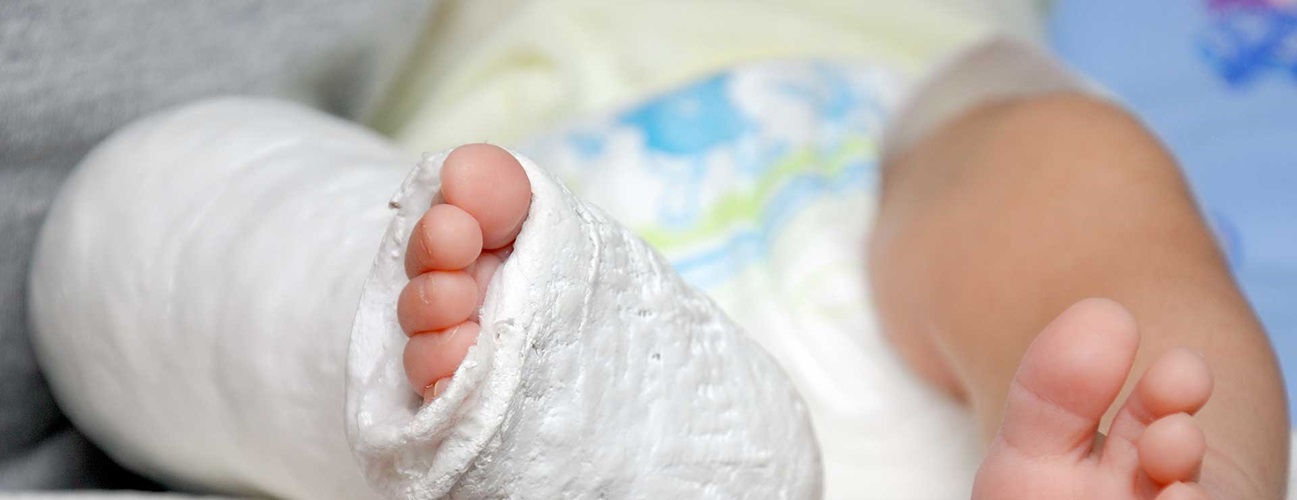Metatarsus Adductus
What You Need to Know

- In metatarsus adductus, the front part of a child’s foot turns inward.
- There is no known cause of metatarsus adductus.
- Metatarsus adductus is a very common foot condition in children.
- Most cases of metatarsus adductus resolve without treatment.
What is metatarsus adductus?
The metatarsus is a group of bones in the middle section of the foot. Each foot has five metatarsal bones, each connected to the phalanges of the toes. Metatarsus adductus refers to a condition where the metatarsal bones are turned toward the middle of the body. This causes a visible deformity, and both feet are often affected.
What are the signs and symptoms of metatarsus adductus?
If your child has metatarsus adductus, you may notice that his or her foot has a curved shape. The front part of the foot (forefoot) points inward and may be turned slightly under. The inside of the foot appears caved in, while the outside of the foot is more rounded. However, unlike clubfoot, there is no foot drop.
What causes metatarsus adductus?
The cause of metatarsus adductus is unknown. No correlation has been found with the gestational age at birth, maternal age at birth or birth order. One theory is that the condition results from the fetus being tightly packed inside the uterus during development. This could lead to abnormal posture and a foot deformity.
Metatarsus Adductus Diagnosis
Metatarsus adductus can be diagnosed through a physical exam. Telltale signs of this condition include the high arch and a visibly curved and separated big toe.
A physician can assess the degree of metatarsus adductus by testing the range of motion of the foot. There are two types of this condition: flexible and nonflexible. In a flexible metatarsus adductus, the foot can be straightened up manually. In the nonflexible kind, the foot is stiff and doesn’t return to its normal position with manual force.
Metatarsus Adductus Treatment
Stretching exercises may be recommended in some cases of metatarsus adductus. However, the condition goes away by itself in most children. Treatment with casts or special shoes is occasionally needed.
Surgery is rarely necessary but can be recommended for children aged 4 or older with a severe deformity. There are various surgical procedures available to reshape the foot. All of them involve cutting certain bones (osteotomy) and then fixing them with plates or screws in a straighter position.
What is the prognosis for an infant with metatarsus adductus?
Flexible metatarsus adductus tends to persist until 1 – 2 years of age. In the majority of cases, the foot goes back to normal. In a small portion of cases, the foot stays moderately deformed. In rare cases, the foot continues to be stiff and deformed even after treatment. Children with metatarsus adductus are also more likely to have developmental dysplasia of the hip.






